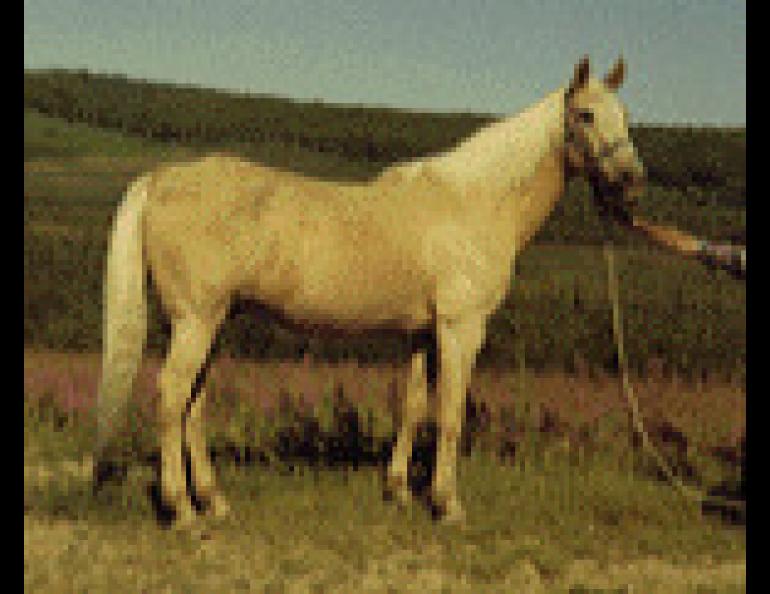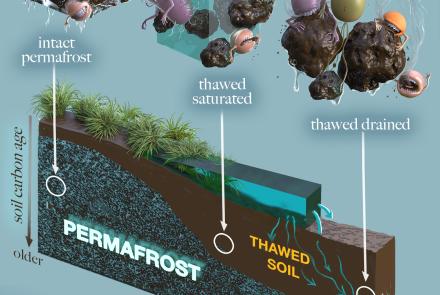

Palomino and Merle: Too Much of a Good Thing
You see them in parades, golden horses with silver manes and silver-trimmed tack: palominos, a color that hearkens back to the days when California was little more than a string of missions. It was then and is now a very special color for a horse, perhaps the equine equivalent of a fantasy landscape on a van.
Less evocative of richness but perhaps as romantic is the blue merle color in dogs, which one collie breeder described as "fog-colored, like mist on a rocky moor." Less poetically inclined people think of the color as bluish gray with ragged black splotches of various sizes, sometimes set off by white and/or tan markings.
Breeders who want to produce palomino horses or merle dogs have a problem. Roughly a quarter of the foals of two palomino parents will be white or very pale cream with pink or light blue eyes and pink skin. The situation in dogs is even worse, with a quarter of the puppies produced by two merle parents being not only mostly white, but usually deaf and sometimes lacking eyes as well. Another quarter of the offspring of merle-merle matings are black puppies; palomino-palomino breedings likewise produce chestnut foals about a quarter of the time. Why does this happen?
Palomino and merle are due to what are sometimes called overdominant genes. One gene does not completely hide the effect of a different gene for the same character, as occurs with black and chocolate in Labrador retrievers. Instead, the three possible gene combinations produce animals with three different appearances: in this case, a horse with two non-palomino genes will be a normally colored horse, a horse with one palomino and one non-palomino gene will have its red-brown pigment diluted to yellow, and a horse with two palomino genes will be a near-albino. If the horse's other color genes would make it a chestnut (red-brown with a mane and tail the same or lighter color than the body), the horse with one palomino gene will be a palomino: the color of a new-minted gold coin with a white mane and tail. If the animal would otherwise be a bay (red-brown with black mane, tail, and lower legs), a single dose of palomino will produce a buckskin. Black or seal-brown (black with tan points) horses are not noticeably affected by one dose of the palomino gene. If two genes for palomino are present, the result is a near-albino.
Merle in dogs is similar, but acts only on the black or chocolate pigment in the dog's coat. An otherwise tricolor, black and tan, or black dog with one merle gene will have the black part of its coat diluted to blue-gray, with patches of dark pigment remaining. Two merle genes produce a defective white, which may have a few patches of blue-gray hair. A few breeders of merle dogs have kept double merles with relatively normal vision and bred them to black mates. This is the only breeding that will produce all merles. Each puppy gets a merle gene from the white parent and a non-merle gene from the black parent.
In principle, palominos could be produced by breeding chestnuts to double dilute whites. However, foals from this kind of breeding cannot be registered as palominos. Also, many breeders do not want to keep an animal they consider defective, or to produce more defective animals in trying to produce the color they want. Remember that breeding merle to merle or palomino to palomino will in the long run produce offspring that are one quarter normally colored animals, one quarter defective whites, and one half offspring the same color as the parents. Thus any breeding that has a fifty percent chance of producing the desired dilute color without producing whites will be favored by breeders.
If a dilute animal is bred to a fully colored one (merle to black or palomino to chestnut), all of the offspring will receive normal genes from the fully colored parent and half will receive normal genes and half dilute genes from the dilute parent. So the breeding of palomino to chestnut will produce half palominos (the same fraction as breeding palomino to palomino), and the remaining foals will be normal chestnuts. In dogs, the favored breeding is of a blue merle to a black (or tricolor, in the case of collies, Shelties, or Australian shepherds), which will produce litters in which on average half the puppies are blue merle and half are black.
Related articles are available on banded (agouti) hair, black, liver and yellow in Labrador Retrievers, white spotting, and Siamese color in cats.





